
We are celebrating 15 years — and counting — of stories that are deeply researched and deeply felt, that build a historical record of what the city has been.
We are celebrating 15 years — and counting — of stories that are deeply researched and deeply felt, that build a historical record of what the city has been.
Times Square runs on spectacle. Bigger and brighter is always better. And though plenty of New Yorkers wear their criticism of Times Square as a badge of local honor, calling it a tourist trap stripped of its former authenticity, there is no denying its place as one of the most iconic public spaces in the world. In recent years, as stretches of Broadway formerly open to vehicular traffic have been repurposed as pedestrian plazas, opportunities to activate the “crossroads of the world” with events, performances, and public art installations have ballooned. The Square hosts hundreds of events, film and television shoots, and public art installations and performances every year. Each has to maneuver around the hundreds and thousands of workers, commuters, visitors, and business owners that pass through every day, and negotiate the regulations and priorities of a host of city agencies.
Damian Santucci is Director of Production and Operations for the Times Square Alliance, the business improvement district that covers 41st to 53rd Streets from 6th to 8th Avenues and 46th Street’s “restaurant row.” As such, he’s responsible for overseeing and facilitating all on-the-ground activity in the Square, from a small public art installation to the annual New Year’s Eve extravaganza. Here, Santucci explains the particular challenges and perks of operating one of the busiest and most recognizable places in the world and walks us through the logistics of making the spectacle happen. –V.S.
What does the day-to-day work of the Director of Production and Operations for the Times Square Alliance entail?
I manage on-the-ground operations in the Square, which includes working with our internal sanitation and public safety departments and the various city agencies that need to be involved in whatever is happening on a given day. As a business improvement district (BID), our budget comes from assessments paid by the business and property owners in Times Square, so technically we work for them. Part of my job is making sure their businesses can operate efficiently in the middle of everything else happening around them.
On the production side, I coordinate with event producers and oversee the set up and staging of events — going on walk-throughs, making approvals, looking over drawings, and making changes — and deal with complications that come up during that process: where are the fire lanes? How is a truck going to get through? How is an installation going to be built? Can it stand up to the weather — wind, rain, snow, ice? How is it going to affect the public? I’m there on overnights making sure that things get loaded in correctly or making sure the shoots are abiding by the rules.
My job was created when the pedestrian plazas opened, which opened up new opportunities for hosting events in the Square. We have a lot of film shoots, and then we get proposals for every kind of special event you can imagine: from zip lines running from one building to the next (which would most likely never be approved) to last year’s Super Bowl Boulevard. There are days when we’re handling an early morning film shoot, a night shoot across the Square, and a huge event loading in on one of the plazas in between.
It’s one thing to manage events for a private space indoors, where it’s always 72 degrees, dry, with great light and restricted access. Here, we have to run everything efficiently while allowing 400,000 people to walk through the Square every day, in all kinds of weather, and, at the moment, with ongoing construction of the permanent pedestrian plazas. And at the end of it all, it has to be just like coming into Madison Square Garden: if you’re Bruce Springsteen and you walk into an arena that you’ve rented, it better be ready for you. Normal does not exist here. Chaos is normal for us. Every day is something different. It’s a wonderful challenge that involves a lot of juggling and problem solving. That’s what I like about it.
What initially led you into this field?
I worked as an intern in the event presentation department for the New York Knicks at Madison Square Garden during my senior year of college and later started directing college basketball (which I still do) and New York Rangers games there. Then I moved to the facilities side and eventually became the head draftsmen and production manager for the Garden, so I drew the production set up for every game, concert, or special event — where the stage would be, where the lighting would be, how we would put the seats. About five years ago, this opportunity came up, and I made the move. It’s one of the best decisions I’ve ever made.
How many events do you handle a year?
We do more than 100 events, and there are more than 200 film permits issued annually for the area. We have a ton of TV shows filming here, from Law & Order to Smash. Events range from small-scale product handouts to huge launches or red carpet premieres. There are concerts of all sizes: it took three days to build the stage for Nicki Minaj’s performance. But then for Paul McCartney’s surprise concert last year, he pulled up in a truck with his whole setup and speakers on its side, he played for 20 minutes, and then he left — coolest thing in the world.
Your work is funded by the businesses in the Square, but the area is also one of the most iconic public spaces in the world, from which the public expects certain things. How does the Alliance serve all those constituencies?
We have to balance what’s good for the owners, what’s good for the Square, and what’s good for New York, and sometimes those interests don’t line up. If you’re a business owner in Times Square, the main thing you care about is that people come here and walk past your store. They might not want a variety of public activities that could block their entrance. For example, nobody makes money on New Year’s Eve; the businesses are mostly closed. But New Year’s Eve is New Year’s Eve — it keeps people coming to Times Square and it’s very good for the city. So there’s a tradeoff, and we try to keep everybody happy.
What role do you think Times Square plays in the city and for the people who live here?
When I first thought about taking this job, Alliance president Tim Tompkins asked what the Square meant to me. The best explanation I could think of was my experience with Michelangelo’s Sistine Chapel. Everyone knows Michelangelo and everyone has read about, studied, and seen a thousand pictures of the Sistine Chapel. If you get to visit it, your expectations are to the moon and back; nothing can meet them. When I finally went for myself, it was the most beautiful thing I’d ever see in my life. It made my expectations seem so small. That’s how people all over the world see Times Square. I take great pride in making it so that somebody can walk into Times Square and her expectations are just as blown through the roof as mine were at the Vatican. I want someone’s first reaction to Times Square to be, “Oh wow, this place is amazing.” If that happens, we did our job.
Times Square is the central heartbeat of the city. It has a long history as a gathering place for people to get their news, to protest, to celebrate an election or watch their team win the World Cup. People come here to see and be seen, to hear and be heard. And this is a place that welcomes those voices. We’ve seen this with all of the recent protests. It means something to people to come through the crossroads of the city, to announce their presence here. That also relates to events, whether a movie shoot or a corporate product launch. There are plenty of great places for a client to get a good commercial, but there is nothing like Times Square; it lets the world know “we’re as big as the biggest place in the world.”
For the New Yorker, Times Square offers something that most other big landmarks don’t: Broadway, the major leagues. Even though some New Yorkers might hate to walk through Times Square every day, they’ll come right here to the theater.
How do the Alliance’s security and sanitation crews relate to or interact with the NYPD or the City Department of Sanitation?
Our department of public safety is out there 24 hours a day, but they supplement and defer to the NYPD. Times Square is a highly sensitive area and is frankly a terrorist target. We think about that every day. There are eyes-in-the-sky all over the place — thousands of cameras, uniformed and undercover NYPD cops, Intelligence, the FBI. They don’t take any chances here; they really can’t. Our officers are there just for public safety. They keep eyes out for suspicious packages or behavior, enforce our rules, and help people with directions or other kinds of assistance. They don’t carry weapons, though they do carry handcuffs. If something happens and somebody is out of control, our officers will control the immediate situation until the police take over.
Sanitation works a little differently, in that there are specified things that our crew does and other things the Department of Sanitation does every day. We have a truck that collects from our Times Square Alliance garbage cans throughout the district, which takes a bit of the load off the City. That is secondary to maintaining street cleanliness — we have people that clean up the streets with brooms and dustpans and take the cigarette butts out of the planters. The new plazas have made cleaning up after big events like New Year’s Eve a little more complicated. The City sanitation sweepers can’t go down them because of their bristles, so we had to clean the plazas by hand while the sweepers did the rest of the street. The confetti hung around a little longer than usual.
Both sanitation and public safety are complicated challenges — we have the reputation and the foot traffic of some of the most popular spaces in the world, like the Colosseum and the Eiffel Tower, but we are a completely public space that doesn’t require paid access. We’re open 24 hours a day, 7 days a week, through hurricanes and snowstorms. We always want to let the world know that Times Square is open, that Times Square is a gathering place for everything.
Other than the NYPD and DSNY, what array of agencies do you work with for different events? How do you manage overlapping jurisdictions or conflicting allowances or restrictions?
Everything in life stems from one thing: communication. There’s a lot of being in the middle to make sure everyone is talking and coordinating. I talk with the Office of Citywide Event Coordination and Management, specifically their Street Activity Permit Office (SAPO), and the Mayor’s Office of Film, Theatre and Broadcasting, which permits film and television shoots, on a daily basis. There really is no confusion on how things work: SAPO is the permitting agency; we are the venue. Before SAPO permits they’ll ask our permission and input on the event setup and details, and obviously there is no event unless they sign off on it.
The City’s overall permit system is very well maintained. Every city agency throws their permits — for film shoots, events, construction — into this database, and I break it down for our district in a weekly calendar that covers all the permits a full year out. It changes all the time as permits are dropped and added. Sometimes I’ll catch a double book or a mistake, like an event scheduled for a site with active construction. I then send that information to a master distribution list of people in our district so they are updated and can get back to me with any questions.
We are in frequent communication with the Department of Transportation — it’s really their street after all. And we work with the FDNY if they need access for an emergency or Con Edison if there’s a fix they need to address. Construction in the Square — of the pedestrian plazas, for example — is a totally different animal. Everybody — us, the Mayor’s Office, the Department of Design and Construction, the architects, the contractors, the contract consultants, the FDNY, the NYPD — has a say in what’s going to happen and how. So there have been meetings upon meetings about that for years.
That’s just for amplified sound. If you have a marching band that comes through, they’re just as loud as anything. We have to think about where and how long they’re coming through, and how many pieces they have, in order to make a judgment call on what we can allow.
Lights are a different story. The billboards in the actual bowtie, 42nd to 47th Streets, are mandatory — buildings there have to have some sort of lighted sign on their facade. It’s seen as part of what makes Times Square Times Square. You can see that in the design of the buildings: they have sides with no windows because they’re all fit for a sign. You’ll also see that certain screens change from day to night. American Eagle’s, which was the biggest in Times Square when it first went up, has to be dimmed at 1am. A lot of people say they do it for energy conservation, which may be true in part and would be lovely, but they really do so because otherwise it’s too bright for the people at the hotel across the way.
Is New Year’s Eve the best night of your year, or is it a nightmare?
I’d say it’s somewhere in between! New Year’s is our big boy. It’s so big that every city agency is massively involved, and everybody has their own responsibilities, but we produce it. The Mayor’s Office, Department of Buildings, Department of Transportation, Office of Emergency Management, and every bit of security you could possibly imagine is there. We’re talking over 2,000 cops. There are so many things about it that are turnkey, but so many things change every year and a lot of planning hours go into it. Once you’re on the ground, being able to roll with the punches is the most important thing.
The ten-minute swing between 11:55pm and 12:05am is pure magic. It’s really unlike any other energy you’ve ever seen. There are emotions of ending the old and beginning anew, of coming together and letting it all go. Times Square is the gathering place for hundreds of thousands of people — in the Square itself and for people tuning in from around the world. Everybody is watching what happens here.
At 11:55pm, after the big final musical performance, our events team plays John Lennon’s “Imagine” and you hear the whole square singing and feeling that message of love and peace. I tear up. I get goose bumps. And then the mayor comes out, pushes the button, the ball drops, and you hit midnight. You give somebody a kiss, and then it’s “Auld Lang Syne,” “New York, New York,” and “What a Wonderful World.” In 20 minutes, by 12:35am, the place is empty. By 8:30 in the morning after clean-up, you’d never know it had happened.
Hearing “Imagine” five minutes before midnight is my favorite moment of the whole year, the greatest moment in the world. I look around at the crowds, at what I’m doing. And then my mom calls to tell me she’s proud of me. That’s really all that matters.
The views expressed here are those of the authors only and do not reflect the position of The Architectural League of New York.


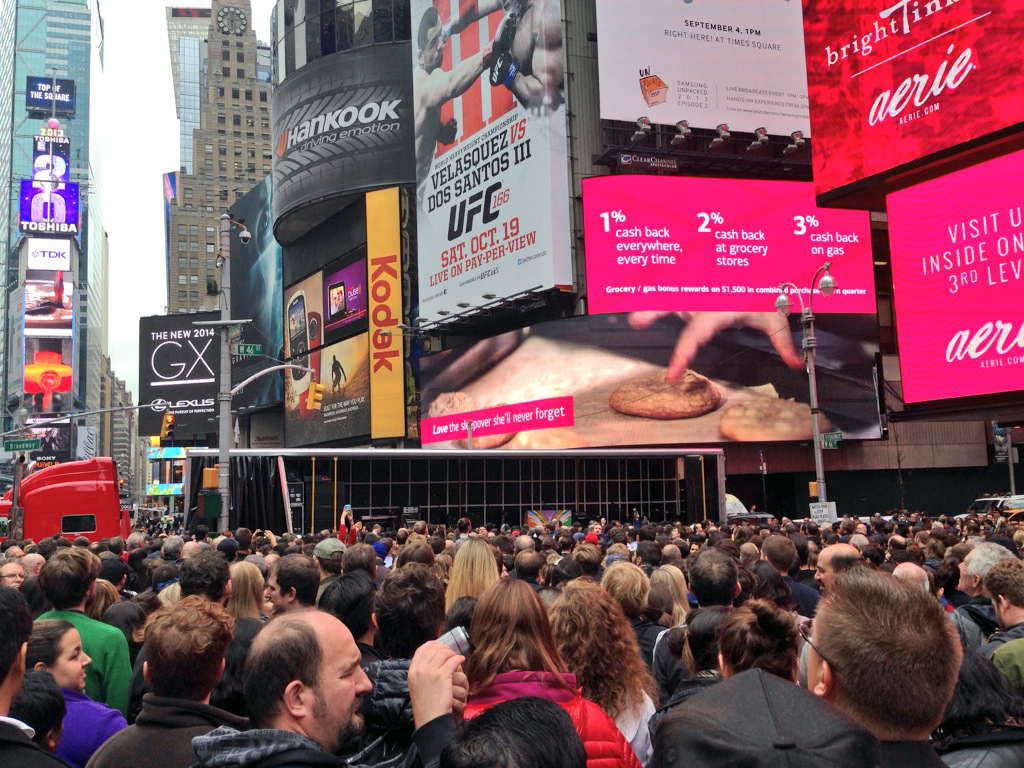
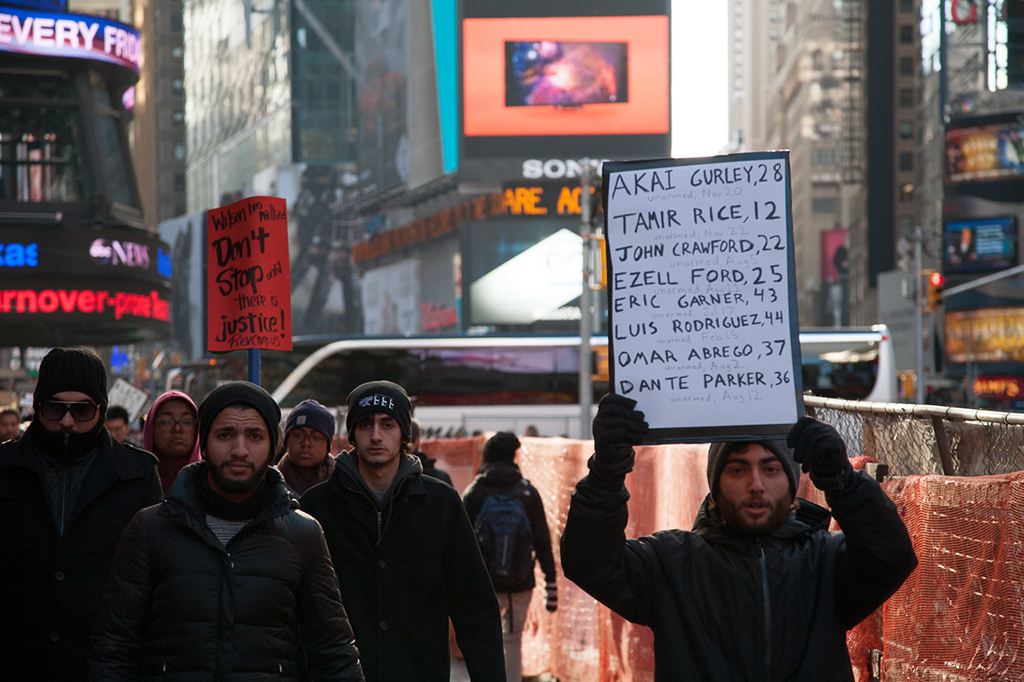
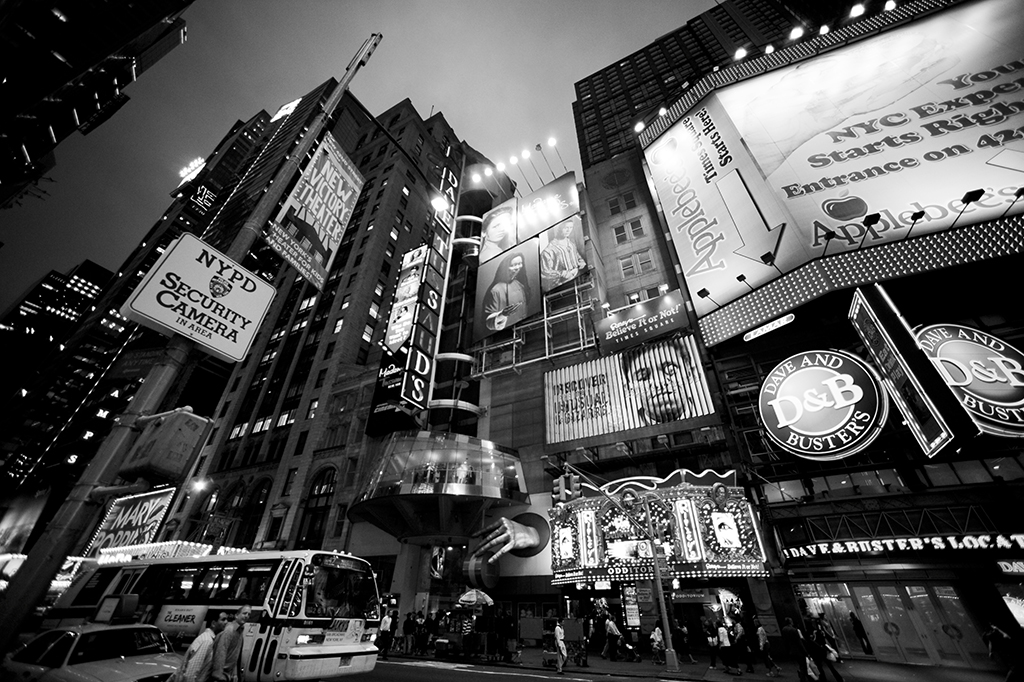
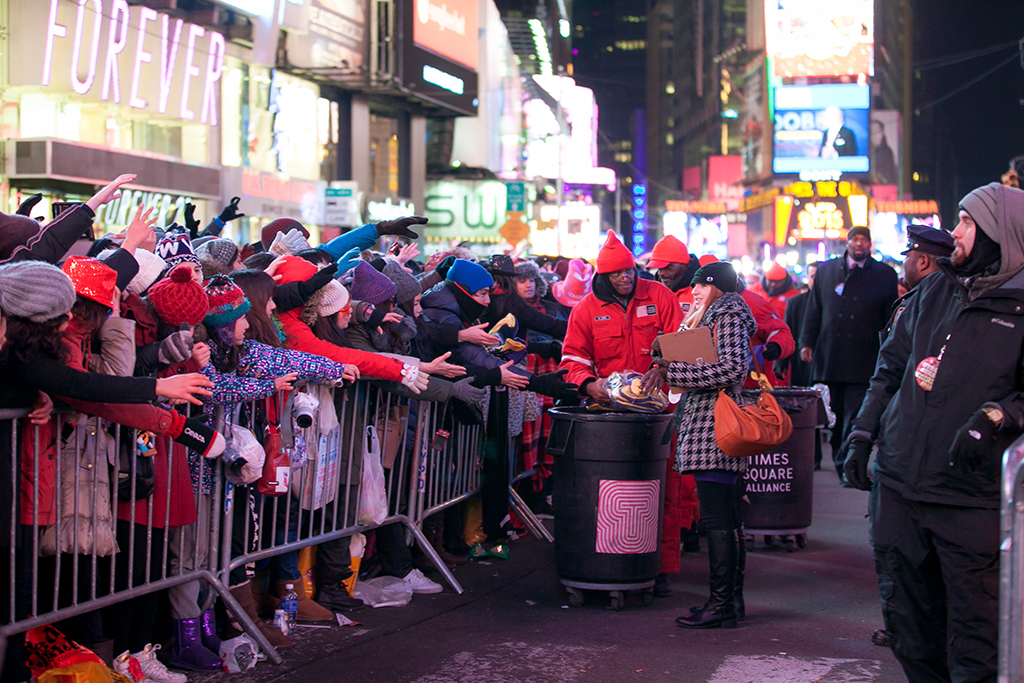
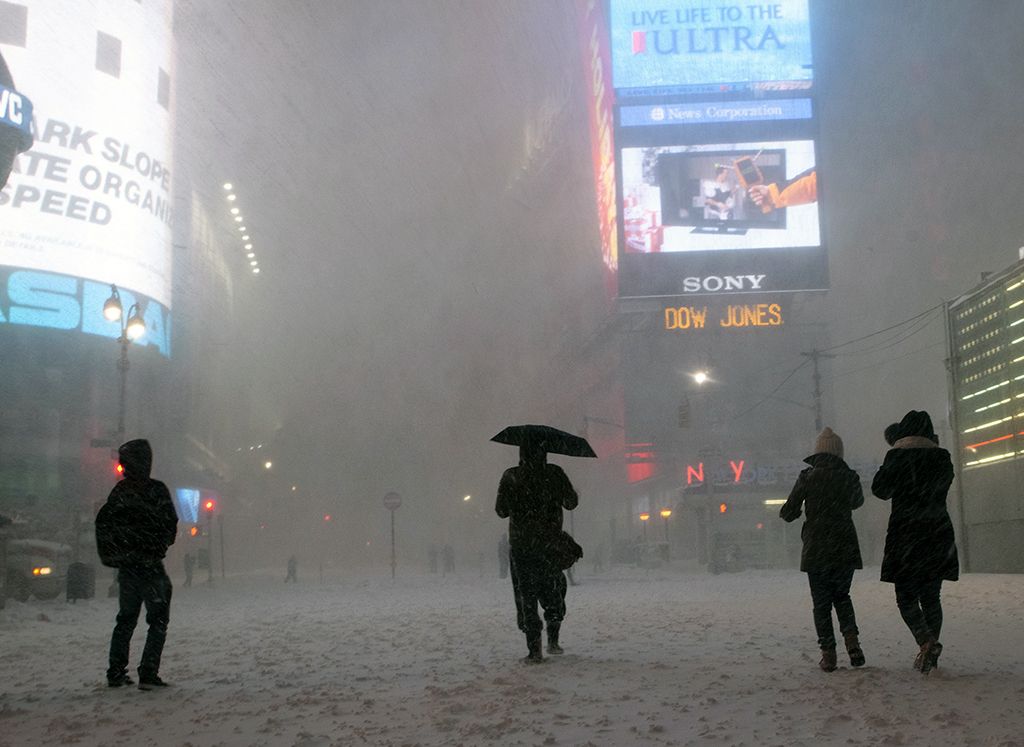
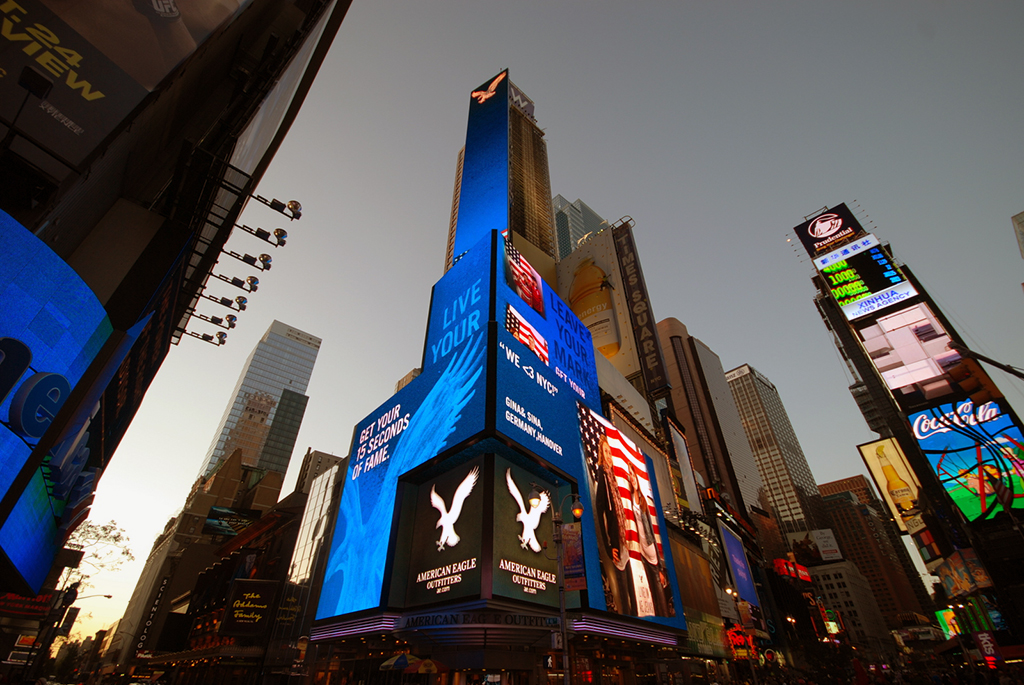


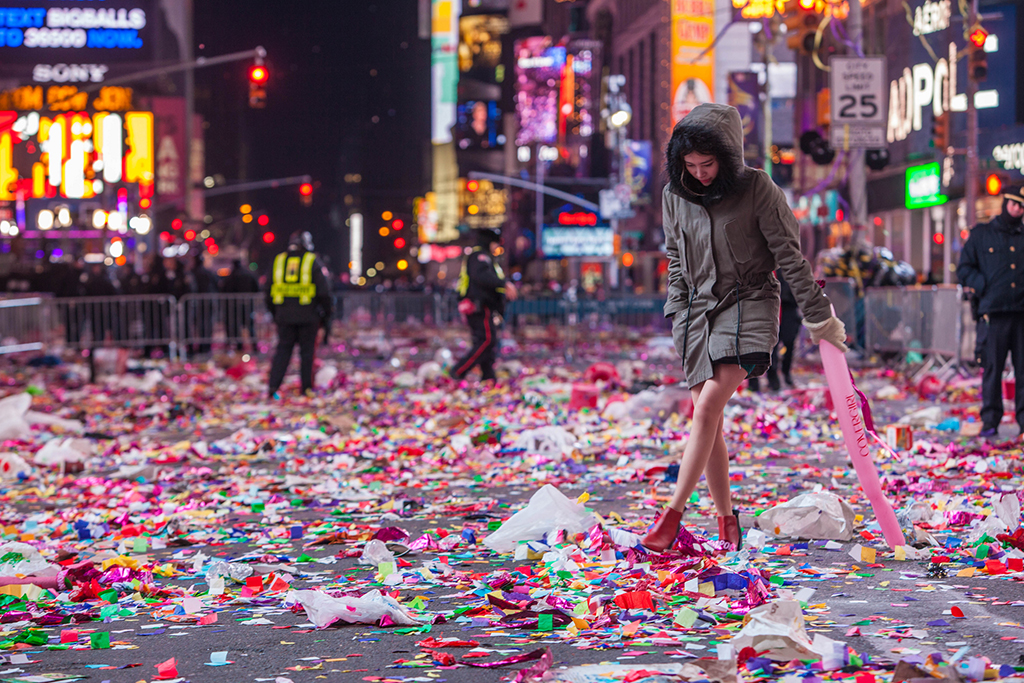
Comments